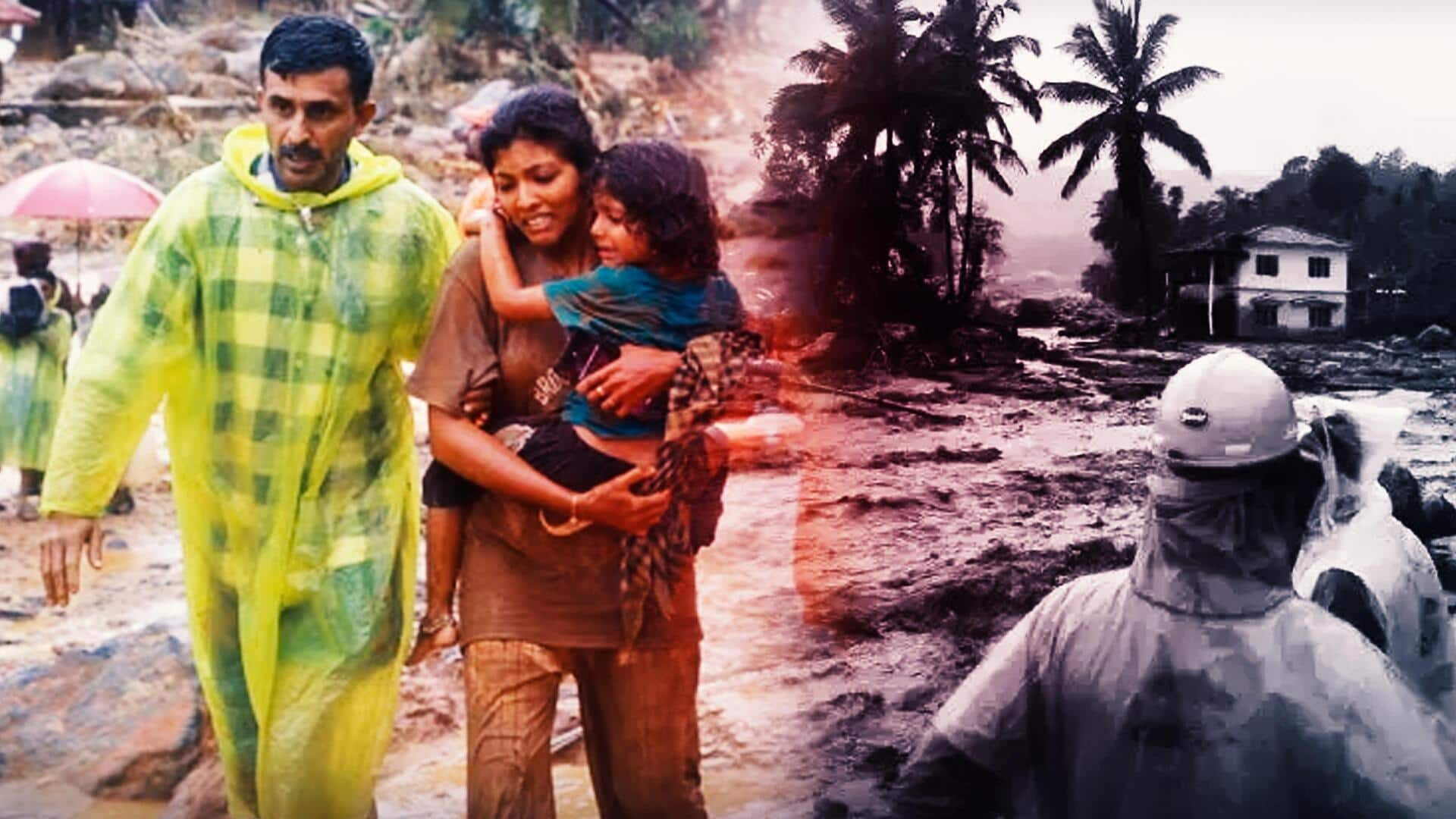
What factors contributed to the deadly Wayanad landslides
What's the story
A series of landslides that struck Wayanad district, Kerala on Tuesday killing over 250 people, was triggered by incessant monsoonal rains. As rescue operations continue, many people are still feared trapped, marking this as one of the country's most severe landslides. Studies over the years indicate that climate change, fragile terrain, and loss of forest cover contributed to the disaster.
Monsoon impact
Kerala's unique geography and climate patterns
Kerala is renowned for its high monsoon rainfall, receiving an average of 3,107mm annually, with 75% occurring during the June-September monsoon season. The state's geography, bounded by the Arabian Sea to the west and the Western Ghats to the east, makes it particularly prone to heavy rains. However, experts argue that factors beyond meteorology such as climate change and unplanned development are exacerbating these weather events.
Climate impact
Climate change intensifies rainfall variability in Kerala
Dr Akshay Deoras, a Research Scientist at the University of Reading, United Kingdom, noted a stark contrast in rainfall patterns across Kerala this season. Some districts experienced above-average rainfall while others, including Wayanad, recorded below-average precipitation. Deoras suggests that this spatial variability could intensify with continued global warming. The state has seen an increase in extreme weather events over the past decade due to human-induced climate change.
Disaster factors
Climate change, unplanned development exacerbate landslides
Mariam Zachariah, a Research Associate at Imperial College, London, explains that climate change is drastically altering Wayanad's rainfall patterns. "This change has increased the risk of landslides. Dry soils absorb less water and heavy rainfalls cause run-offs that can lead to landslides," Zachariah said. Mahesh Palawat from Skymet Weather noted that monsoon patterns have become more erratic due to rising air and ocean temperatures, particularly the rapid warming of the Arabian Sea.
Sustainable solutions
Experts call for climate-resilient infrastructure, land management
Professor YP Sundriyal from HNB Garhwal University emphasized the need for scientifically sound construction techniques in mountainous regions. Roxy Mathew Koll from the Indian Institute of Tropical Meteorology, Pune, called for improved early warning systems and careful evaluation of land use changes in landslide-prone areas. Prof Anjal Prakash from the Indian School of Business suggests implementing climate-resilient infrastructure and promoting sustainable land management practices to mitigate the impact of these disasters.
Environmental impact
Human activities, land use changes contribute to landslides
The landslides were triggered by extremely heavy rainfall caused by the warming of the Arabian Sea. Wayanad received over 140mm of rain in 24 hours—about five times more than expected. Girish Gopinath, head of the Kufos Department of Climate Variability and Aquatic Ecosystems, cited human activities in Wayanad and Idukki high ranges as major contributing factors. The Western Ghats Ecology Expert Panel had recommended declaring 75% of the ghats as an environmentally sensitive area, but these recommendations were not implemented.
Past disasters
Kerala's history of landslides, climate-induced disasters
The last major landslide in Kerala occurred in 2020, when an avalanche hit tea plantation workers in Idukki's Kanan Devan Hills, killing 65 people. In 2018, devastating floods killed over 400 people across Kerala. Former Earth Sciences Ministry Secretary and climate scientist M Rajeevan noted that the Western Ghats, once covered in thick forests, now have rubber trees, which cannot hold the soil together. Construction activities in vulnerable areas also contribute to such disasters.